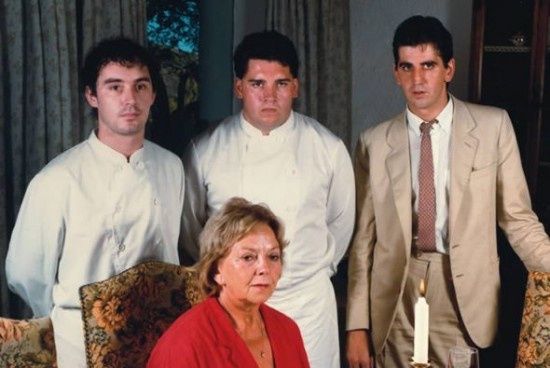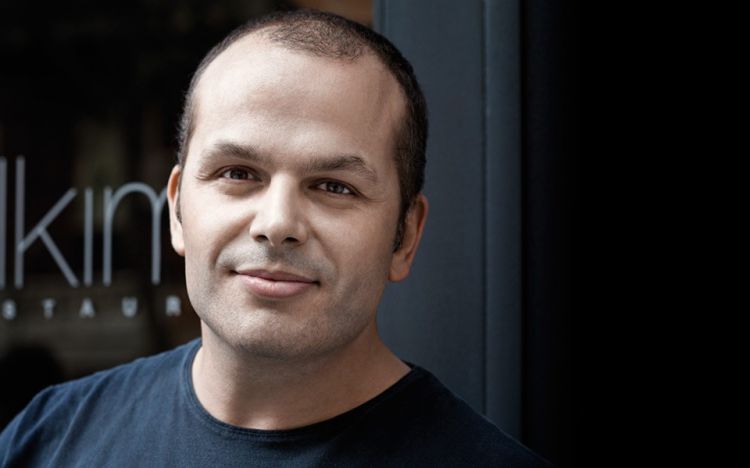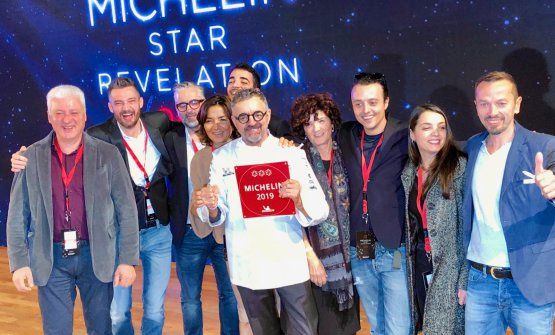I was born in Agen, in the region of Aquitaine, in France. I graduated in Spanish Philology from the University of Toulouse. After completing a master’s degree in History of Catalonia in Barcelona, I decided to stay and live in this beautiful town. I taught French for three years, but I didn’t like it very much; this is why I started to work in a restaurant by the port. I learnt to work as a cook in the Eighties, at the school of May Hoffman and with a French teacher, a pupil of Joël Robuchon.
I became a cook because I enjoyed eating and I wanted to find out what was behind the food I was eating! I continued to learn… by eating, mostly in restaurants in Spain, France and in Italy. I participated in the Jornadas Gastronómicas organised in Vitoria by Rafael García Santos and I collaborated with his guide, Lo Mejor de la Gastronomía [the first fine dining congress in the world] for a while. In 2006 I left the kitchen and opened my blog and started to work with the Pep Palau’s Forum Gastronòmic de Girona, with various publications such as Apicius, Qué Fem from La Vanguardia and others like Cuina, Cocina Futuro and, of course, Identità Golose. I also worked for the radio and, since last year, I collaborate with Catalunya Radio, where I report weekly on restaurants.
I first visited El Bulli in 1989, but it was only in 1993, after meeting Ferran Adrià after the service, that I realised how important that cuisine was. I was touched by the Bone marrow with caviar and cauliflower.

To the left, a very young Ferran Adrià in an old photograph. Right, Juli Soler, another pillar at El Bulli (photo esebertus.com)
During the following 15 visits, I noticed that that restaurant was revolutionising the world culinary paradigm, starting to build a method based on new concepts and techniques. In the early Nineties, I was also struck by
Pierre Gagnaire’s first restaurants in Saint Etienne, for the crazy pairings of ingredients and for the aesthetics of the presentation. And I was also thrilled by my first visit to
Michel Bras, for the intervention of
naturaleza in the dish, and the revindication of the “poor” terroir. A concept of natural luxury that later inspired
Mugaritz and even
Noma.
Of
Gagnaire it’s impossible to mention just one dish. I remember reading the menu, and the poetry in the name of the dishes, made with products, spices and herbs that were unknown in the early Nineties. With a small group of cooks, we invited him to cook in Barcelona in a small restaurant called
L'Aram. He accepted the invitation and came to cook for free, just because he had a nice memory of this town from his teenage years.
Pierre works with emotions and I’m happy of our friendship. Of
Michel Bras I recall above all the way he cooked foie gras: it was hardly fat, almost meaty. The new vision of this product for me is as important as his
Coulant or his
Gargouillou. After 25 years,
his restaurant is still avantgarde.
Today I’m tired of the “fine dining / casual dining” dichotomy. And I’m tired of fine dining where different elements are scattered on the plate, with three drops of sauce on one side, two flowers on the other, some cubes of gelatine or some brittle to decorate. This is no longer food you can enjoy, but a staged recipe for
Instagrammers. The beauty of a dish is about taste. Fine dining should not be a question of appearance, but of substance (good products, well cooked, well supported by the chef’s personal creativity, having the clients’ taste in mind, not photographs. This is why I’ll always defend a spoon as the best cutlery!).
The success of a more casual dining is the reaction, more or less aware, of a part of the audience to the cold and ungenerous fine dining that we sometimes notice in some 3 starred restaurants (or even in establishments with one star that aspire to the same prize). For many people, sitting in a 3 starred restaurant is a sign of social ostentation; I personally dine in a restaurant just to enjoy the food.
I’ve just been for the second time to Chambre Séparée, with chef Kobe Desramaults in Gent (Belgium). This restaurant could be an example of how to go beyond the above-mentioned dichotomy. With a better smoke extraction (he makes extensive use of the grill), it could well receive 3 stars, even though everything appears to be informal and simple: no artifices in the dish, no "decorations" (an old concept, in my opinion). His simple matured pigeon, or his cuts of lamb, slowly grilled, are memorable. He’s an underappreciated chef. Already at In De Wulf [his previous activity, now closed] he deserved more acknowledgements.
In Paris I recently had a lovely meal at Le Clarence. The cuisine is straightforward, with no unnecessary frills, in an elegant setting. I also like Pascal Barbot’s precision, David Toutain’s personality, and the crazy radicalism of Alexandre Gauthier (except sometimes, it lacks a little in taste).
In Galicia, I love the cuisine of Javier Olleros at Culler de Pau, a very discreet and still little known chef. Elegant and rich at the same time, he has a marvellous restaurant near Pontevedra. In Barcelona, Jordi Vilà at Alkimia starts to be acknowledged. The same goes for Rafa Peña at Gresca and Oriol Ivern at Hisop. As for casual dining places, I’d point out Toni Romero at Suculent and restaurant Dos Pebrots which has a chef like Borja Garcia (ex Noma, Ryugin, Etxebarri…), in the shade of Albert Raurich of Dos Palillos. I adore the progressive Mexican cuisine of Paco Méndez, chef at Albert Adrià’s Hoja Santa.


Mauro Uliassi celebrates with all his team the third Michelin star, last December
In Valencia, my favourites are Ricard Camarena and restaurant BonAmb de Xávea, which already has two stars. But also Vicente Patiño with his Saiti, still with no Michelin stars. In Andalusia, apart from the great (Angel León and Paco Morales), I should mention Benito Gómez and his Bardal in Ronda, Pedro Sanchez of Bagá in Jaen and Juan Luis Fernández (ex chef at Aponiente) of Lu in Jerez.
In Italy, if I may, I’m happy that Mauro Uliassi’s cuisine is more appreciated these days, but unfortunately he’s still not very known in Spain. Now I should speak of the great chefs that are overappreciated by guides and reporters (every country has their own), but I’d rather tell you about it in private...
Translated into English by Slawka G. Scarso